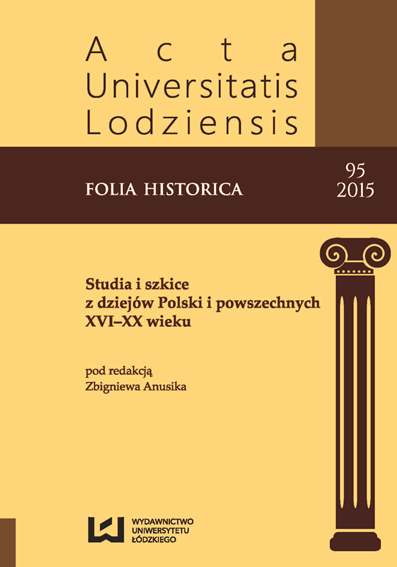Współdziałanie wojsk Rzeczypospolitej Obojga Narodów w pierwszym etapie walk kampanii cudnowskiej
DOI:
https://doi.org/10.18778/0208-6050.95.05Abstrakt
This researchers are intended to comprehend and put under analyses a set of modes of cooperation performed by different military units under Polish command during first part of the cudnovian campaign, including hostilities under Kutyszcze, Lubar and during the retreat of Moscovian-Cossack army on the path to Cudnow.
A proper campaign became my choice as a subject of researches, because indigenous and unique Polish-Lithuanian art of War achieved very high level of development in this period, perfected by great hetmans since the end of 16th century. It gives a good background to examine methods of cooperation by different types of forces in the army of Polish-Lithuanian Commonwealth.
Conclusions made in the wake of analyses devoted to the first part of this campaign could be formed in to four sets.
- Modular and diverse structure of Polish army amended by large group of Crimean light cavalry is a flexible and versatile power. It gives a large superiority over Moscovian-Cossack forces. Commanders on different levels of command are able to create ad hoc joint task force and to variegate cooperation modes between them.
- Cooperation is predominant quality of Polish forces during vast majority of sufficient actions in this campaign. Diacritically large spectrum of available types of specialized units causes a mixture of capabilities and complicated scenarios of cooperation, which is used with great outcome to step up the effectiveness of Polish army. Despite confrontation with very strong discipline of Moscovian-Cossack forces, their sustainable, enduring defense, desperate brave in close combat and good command, there are only one dominant and pervasive force – Polish army and Tatars were creative enough, to bring their opponents to the passive role.
- Some weak moments in polish-tatar cooperation could be also observed. Especially Tatars are the reason of some havoc in collective actions. They attack without permission (battle of Kutyszcze) or withhold their units to avoid losses, making Poles to fight alone (by the Ibr river).
- Ad hoc although not hasty actions are performed alongside with disciplined methodical operations. Commanders of small units (under regimental level: banners, squadrons etc.) are creative but also it is visible, that among all polish forces officers are provided with a dependable background of unified procedures which they choose to operate in a wide spectrum of tactical situations. Hostilities started by the charge of hussars under Wilczkowski and continued by action of musketeers is a god example here. It is a modern army with standardized roles and procedures, but not bounded with it. Enthusiasm of soldiers and their readiness to support each other is showed by units, who spontaneously engage the cooperation.
Pobrania
Pobrania
Opublikowane
Jak cytować
Numer
Dział
Licencja

Utwór dostępny jest na licencji Creative Commons Uznanie autorstwa – Użycie niekomercyjne – Bez utworów zależnych 4.0 Międzynarodowe.











